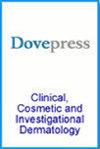通过孟德尔随机化和中介分析探讨肠道微生物群和短链脂肪酸对荨麻疹亚型的双向影响
IF 1.9
4区 医学
Q3 DERMATOLOGY
引用次数: 0
摘要
背景:越来越多的证据表明,肠道微生物群及其副产品,尤其是短链脂肪酸(SCFAs)与荨麻疹有关。本研究采用多种孟德尔随机化(MR)分析方法来揭示肠道微生物群、短链脂肪酸和不同亚型荨麻疹之间复杂的相互作用,旨在阐明其潜在机制并加强未来的临床研究:我们分析了已发表的全基因组关联研究(GWAS)汇总统计数据,以确定肠道微生物群与荨麻疹的三种常见亚型(自发性、皮肤型和温度触发型)之间的关联。最初的双样本和反向 MR 分析探讨了这些关系中的因果关系。随后的多变量磁共振分析研究了 SCFAs 在调节这些相互作用中的作用,并进行了多项敏感性分析以确保稳健性:特定分类群与各种荨麻疹亚型的相关性不同。从微生物群到荨麻疹:一个分类群与皮肤性荨麻疹呈负相关;七个分类群与温度诱发的荨麻疹呈负相关,四个呈正相关;四个分类群与自发性荨麻疹呈负相关,六个呈正相关。相反,从荨麻疹到微生物群:5 个分类群与皮肤性荨麻疹呈负相关;4 个分类群与温度诱发的荨麻疹呈负相关,2 个呈正相关;2 个分类群与自发性荨麻疹呈负相关。这些关联是在名义显著性水平(P < 0.05)下观察到的。在对多重检验进行 Bonferroni 校正后,这些关联未达到统计学意义。不过,观察到的趋势为了解微生物群与荨麻疹之间潜在的相互作用提供了线索。多变量磁共振分析阐明了 SCFAs 的作用,尤其是在调节免疫反应中起关键作用的醋酸盐。对醋酸盐进行调整后发现,放线菌、双歧杆菌和双歧杆菌科对自发性荨麻疹有直接影响,相应的调解效应分别为-22%、-24.9%和-24.9%。同样,对钙化菌科(Alcaligenaceae)和倍增菌科(Betaproteobacteria)的调整表明,醋酸盐对皮肤摄影和自发性荨麻疹有显著的负面影响,其中介效应分别为-21.7%和-23.7%:这项研究证实了肠道微生物群、SCFAs 和荨麻疹之间的相互联系。它强调了 SCFAs 在通过微生物群影响荨麻疹方面的潜在中介作用,为未来的治疗策略提供了启示。本文章由计算机程序翻译,如有差异,请以英文原文为准。
Exploring the Bidirectional Effects of Gut Microbiota and Short-Chain Fatty Acids on Urticaria Subtypes Through Mendelian Randomization and Mediation Analysis
Background: Emerging evidence links gut microbiota and their by-products, notably short-chain fatty acids (SCFAs), to urticaria. This study employs multiple Mendelian Randomization (MR) analyses to unravel the complex interactions among gut microbiota, SCFAs, and different subtypes of urticaria, aiming to elucidate the underlying mechanisms and enhance future clinical research.
Methods: We analyzed published genome-wide association study (GWAS) summary statistics to identify associations between gut microbiota and three common subtypes of urticaria: spontaneous, dermatographic, and temperature-triggered. Initial two-sample and reverse MR analyses explored the causality in these relationships. Subsequent multivariate MR analyses investigated the role of SCFAs in modulating these interactions, with multiple sensitivity analyses to ensure robustness.
Findings: Specific taxa were differently associated with various urticaria subtypes. From microbiota to urticaria: one taxon was negatively associated with dermatographic urticaria; seven taxa were negatively associated and four positively associated with temperature-triggered urticaria; four taxa were negatively associated and six positively associated with spontaneous urticaria. Conversely, from urticaria to microbiota: five taxa were negatively associated with dermatographic urticaria; four were negatively and two positively associated with temperature-triggered urticaria; and two were negatively associated with spontaneous urticaria. These associations were observed at a nominal significance level (P < 0.05). After applying Bonferroni correction for multiple testing, these associations did not reach statistical significance. The observed trends, however, provide insights into potential microbiota-urticaria interactions. Multivariate MR analyses elucidated the role of SCFAs, particularly acetate, which plays a crucial role in modulating immune response. Adjusting for acetate revealed direct effects of Actinobacteria, Bifidobacteriales, and Bifidobacteriaceae on spontaneous urticaria, with corresponding mediation effects of − 22%, − 24.9%, and − 24.9% respectively. Similarly, adjustments for Alcaligenaceae and Betaproteobacteria indicated significant negative effects of acetate on dermatographic and spontaneous urticaria, with mediation effects of − 21.7% and − 23.7%, respectively.
Conclusion: This study confirms the interconnected roles of gut microbiota, SCFAs, and urticaria. It highlights SCFAs’ potential mediating role in influencing urticaria through microbiota, providing insights for future therapeutic strategies.
Methods: We analyzed published genome-wide association study (GWAS) summary statistics to identify associations between gut microbiota and three common subtypes of urticaria: spontaneous, dermatographic, and temperature-triggered. Initial two-sample and reverse MR analyses explored the causality in these relationships. Subsequent multivariate MR analyses investigated the role of SCFAs in modulating these interactions, with multiple sensitivity analyses to ensure robustness.
Findings: Specific taxa were differently associated with various urticaria subtypes. From microbiota to urticaria: one taxon was negatively associated with dermatographic urticaria; seven taxa were negatively associated and four positively associated with temperature-triggered urticaria; four taxa were negatively associated and six positively associated with spontaneous urticaria. Conversely, from urticaria to microbiota: five taxa were negatively associated with dermatographic urticaria; four were negatively and two positively associated with temperature-triggered urticaria; and two were negatively associated with spontaneous urticaria. These associations were observed at a nominal significance level (P < 0.05). After applying Bonferroni correction for multiple testing, these associations did not reach statistical significance. The observed trends, however, provide insights into potential microbiota-urticaria interactions. Multivariate MR analyses elucidated the role of SCFAs, particularly acetate, which plays a crucial role in modulating immune response. Adjusting for acetate revealed direct effects of Actinobacteria, Bifidobacteriales, and Bifidobacteriaceae on spontaneous urticaria, with corresponding mediation effects of − 22%, − 24.9%, and − 24.9% respectively. Similarly, adjustments for Alcaligenaceae and Betaproteobacteria indicated significant negative effects of acetate on dermatographic and spontaneous urticaria, with mediation effects of − 21.7% and − 23.7%, respectively.
Conclusion: This study confirms the interconnected roles of gut microbiota, SCFAs, and urticaria. It highlights SCFAs’ potential mediating role in influencing urticaria through microbiota, providing insights for future therapeutic strategies.
求助全文
通过发布文献求助,成功后即可免费获取论文全文。
去求助
来源期刊

Clinical, Cosmetic and Investigational Dermatology
Medicine-Dermatology
CiteScore
2.80
自引率
4.30%
发文量
353
审稿时长
16 weeks
期刊介绍:
Clinical, Cosmetic and Investigational Dermatology is an international, peer-reviewed, open access journal that focuses on the latest clinical and experimental research in all aspects of skin disease and cosmetic interventions. Normal and pathological processes in skin development and aging, their modification and treatment, as well as basic research into histology of dermal and dermal structures that provide clinical insights and potential treatment options are key topics for the journal.
Patient satisfaction, preference, quality of life, compliance, persistence and their role in developing new management options to optimize outcomes for target conditions constitute major areas of interest.
The journal is characterized by the rapid reporting of clinical studies, reviews and original research in skin research and skin care.
All areas of dermatology will be covered; contributions will be welcomed from all clinicians and basic science researchers globally.
 求助内容:
求助内容: 应助结果提醒方式:
应助结果提醒方式:


